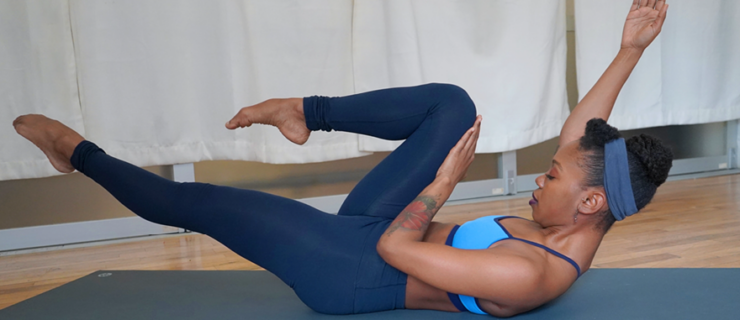Injured All the Time? You Could Be Overexercising
Does it seem like you’re getting knocked down by one injury after another? Feeling weaker the more you train? These could be signs that you’re overexercising. For ballet dancers who have been taught a “more is better” approach from a young age, that might seem impossible—how could more exercise make you weaker? But it’s true: Overexercising can have serious consequences for your mental and physical health, and it may hold you back from achieving your dance goals.
How Much Is Too Much?
Given the regularity of classes and rehearsals, plus cross-training outside of the studio, ballet dancers naturally exercise much more than the average person. So how can you tell if your routine is becoming excessive? Recurrent injuries are a clue, especially bone injuries such as stress fractures, says Lauren Borowski, MD, a dance and sports medicine specialist at NYU Langone’s Harkness Center for Dance Injuries in New York City. Intense exercise places stress on your bones, Borowski explains, which can actually make them stronger—but only when you give them time to build back up. Without enough rest, your bones can instead become weaker, leading to injury. “That can certainly affect your performance,” she says. “A stress reaction can keep you out for months.”

Sometimes overexercising happens by accident, like when dancers add too much cross-training to an already overloaded routine. According to Amanda Rixey, DPT, a dance physical therapist in Seattle, it typically takes about six to eight weeks to see results from a well-designed strength-training program. “If you’re not seeing gains in strength at that point, it’s time to reevaluate,” she says, explaining that is often a sign of overexercising, undernutrition or other health concerns. While cardio training may be beneficial in some contexts—like to help you build stamina for long ballets—if you’re hopping on the treadmill or elliptical for long workouts on days when you’ve already danced a lot, or doing cardio to “make up” for not dancing on other days, you’re probably overdoing it.
The culture of ballet often makes dancers feel that the amount of exercise they’re doing is necessary and normal when, in fact, it’s too much, says Rixey. For example, dancers are often encouraged to take extra classes outside their level or on days off. But often what you really need to dance your best is more time for rest and recovery.
Your behaviors and feelings around exercise can also be a clue that what you’re doing is unhealthy. “Often, overexercising happens in privacy. Dancers will hide it or do it in secret,” says Miriam Rowan, PsyD, a former San Francisco Ballet company member turned clinical psychologist. Another sign? You’re exercising solely to change the way your body looks, to try to lose weight or to “work off” what you’ve eaten, she says.
The Risks of Overexercising
In addition to increasing your risk of injury and delayed healing, overexercising may lead to burnout and depression, says Borowski. It can also cause hormonal changes, including the loss of your period if you’re a person who menstruates. This is a classic sign of relative energy deficiency in sport, or RED-S, a condition previously known as the “female athlete triad.” (It was renamed, in part, because it affects people of all genders.) RED-S develops when your body is expending more energy than it’s taking in, so it can happen as a result of overexercising, undereating or a combination of both. When your body doesn’t have enough available energy, that affects everything you do—even the way your brain works. “People who are malnourished can experience cognitive rigidity, which means they find it difficult to be creative and flexible in their thinking,” says Rowan. “That, of course, is the opposite of what most dancers want.”
Getting Help
Overexercising can be a feature of eating disorders such as anorexia nervosa, says Rowan. It can also be compulsive behavior that dancers use to “escape” negative feelings. Other times, it’s the result of comments from teachers or directors about your body, technique or strength, or the pressure many dancers feel to be perfect. A mental health specialist can help you sort out what’s driving your behavior, but your care should involve a team of medical professionals.
“Overexercising is an interdisciplinary issue, so a multidisciplinary approach is usually best,” says Rowan. For example, a physical therapist or athletic trainer can help you adjust your training routine and make sure everything you’re doing is helping, not hurting. A medical doctor can monitor your bone and hormonal health, and a registered dietitian can make sure you’re fueling adequately. If your school or company doesn’t have in-house medical staff, there are dance or sports medicine clinics in many large cities where you can find a team like this. If you live outside these areas, look for dance experts through the International Association for Dance Medicine & Science and Doctors for Dancers.
If assembling a team of providers feels like a daunting task, focus on taking the first step. “Reach out to a confidant, whether it be a teacher you feel like you can trust or a health care provider that you have contact with already,” Borowski says. Seeking support and giving your body the time it needs to rest and recover will only help you come back stronger.






